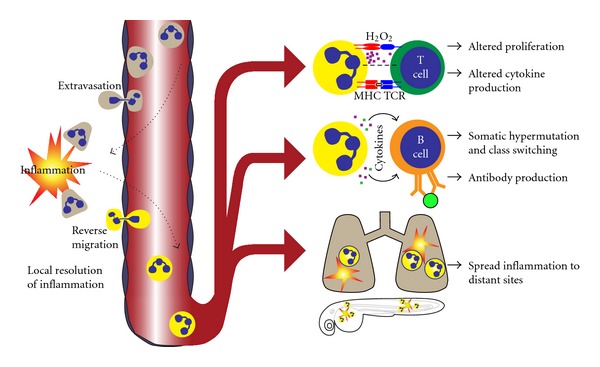Figure 3
Potential functions of reverse migrated neutrophils. On the left side of the illustration, neutrophils (tan) are responding to an extravascular inflammatory stimulus. After responding to the stimulus, neutrophils perform reverse migration (yellow) and enter the vasculature. This process has been suggested as a mechanism to resolve inflammation at the local level. We are proposing the following as potential functions of reverse migrated neutrophils. Neutrophils may modulate T-cell proliferation and cytokine production in an antigen-independent or-dependent manner. Integrin-mediated neutrophil-T cell contact, hydrogen peroxide, and T cell receptor (TCR) signaling have demonstrated importance in neutrophil-mediated regulation of T cell function. Neutrophils may promote antibody diversification, class switching, and production by splenic B cells through the secretion of cytokines. Reverse migrated neutrophils may travel to distant tissues and induce additional inflammation. Reverse-migrated neutrophils were implicated in inducing pulmonary inflammation in mice.

